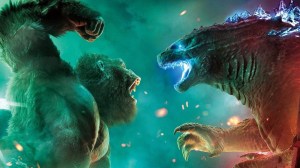
What happens when you drop humanity’s greatest protector into a post-apocalyptic world in which humanity barely clings to existence after a horrific nuclear apocalypse? It’s a premise that might sound a little overwrought and a touch cheesy, but when that character is Wonder Woman and she’s in the hands of writer and artist Daniel Warren Johnson for Wonder Woman: Dead Earth #1 what you get is a masterpiece that is fresh while remaining more true to the core of the iconic character than any other story in a long time.
Videos by ComicBook.com
This issue tells the story of Diana as placed seemingly generations beyond the world we know, one in which almost all of humanity was destroyed in some horrific, nuclear cataclysm, though it’s one that no one knows many details about. Those that knew, those who survived it, are all dead. What’s left of humanity and civilization has become barely recognizable in their efforts to survive. Diana, however, has made through this horror intact and awakens from stasis when a group of humans accidentally come across her while trying to escape a horribly mutated beast.
Early in the issue it’s clear that the story is going to have layers of emotional weight to both in terms of Diana’s story and those of the people she encounters. One of the first gut-punches comes when Diana realizes what’s been lost upon discovering where her form was kept. Another comes when the young woman, Dee, struggles with Diana’s betrayal when brought to their fading outpost of humanity. In both of those moments, though, there is no artifice and no manipulation in the way the story is crafted. These moments are presented in such a way that they are more felt than read. The same goes for other difficult moments, when the reality of what being a survivor means and how brutality has come to define humanity, an instinct sharpened by desperation allowing fear to crudely masquerade as power.
This presentation of humanity is, perhaps, what makes Diana’s actions and portrayal in the comic so perfect. She is confused—her entire world changed and lost—then she is quickly betrayed and suffers a horrible realization (there’s a twist there that is brutal and gruesome and absolutely brilliant), but she remains true to herself. She is the hero who loves humanity the most. It is her job to protect them, to save them, and to guide them. Despite her own situation, Wonder Woman never for a moment loses that and the approach is done with a touch of softness and reverence for the character one wouldn’t expect in a post-apocalyptic setting where, it would seem, pain and horror are the norm.
All of this is a testament to Johnson’s storytelling. It is no exaggeration to say that this comic could be a defining moment in Wonder Woman’s history and it’s delivered with a perfect balance of dense narration and exposition, as well as more action-driven dialogue. Johnson’s script and artwork deliver the same impressions and feelings of simultaneous hope and despair.
As for that art, while Johnson’s kinetic style won’t be to everyone’s taste, it is well-deployed here. Its fractured, almost hurried-looking quality imbues the whole issue with the same desperation that fills the landscape. It’s frenetic and wild and even hard to look at in some places, making it a brilliant reflection not only of the story’s setting, but some of its themes as well.
Without a doubt, Wonder Woman: Dead Earth #1 is exactly what one might expect from a post-apocalyptic tale set in a nuclear wasteland, but it’s so much more and it’s that more that makes this book truly great. This isn’t a “Wonder Woman story” so much as it as a human story that reminds us what the core appeal of one of comics most-loved and revered heroes really is. It’s raw, it’s real, and it’s easily one of the best comics of this entire year.
Published by DC Comics
On December 18, 2019
Written by Daniel Warren Johnson
Art by Daniel Warren Johnson
Colors by Mike Spicer
Letters by Rus Wooton
Cover by Daniel Warren Johnson









